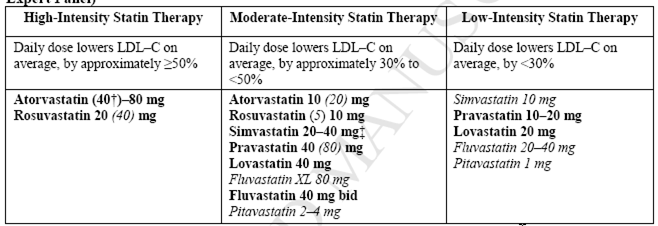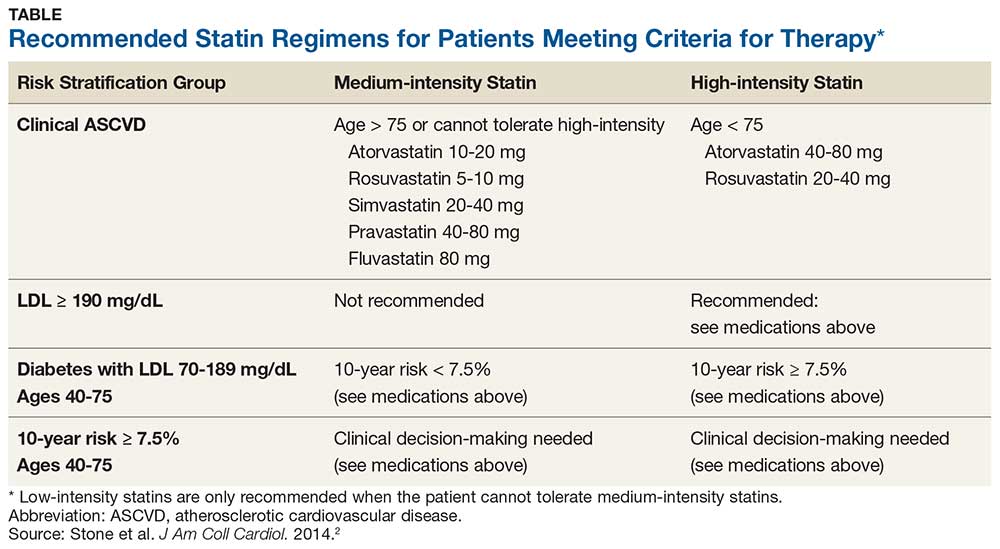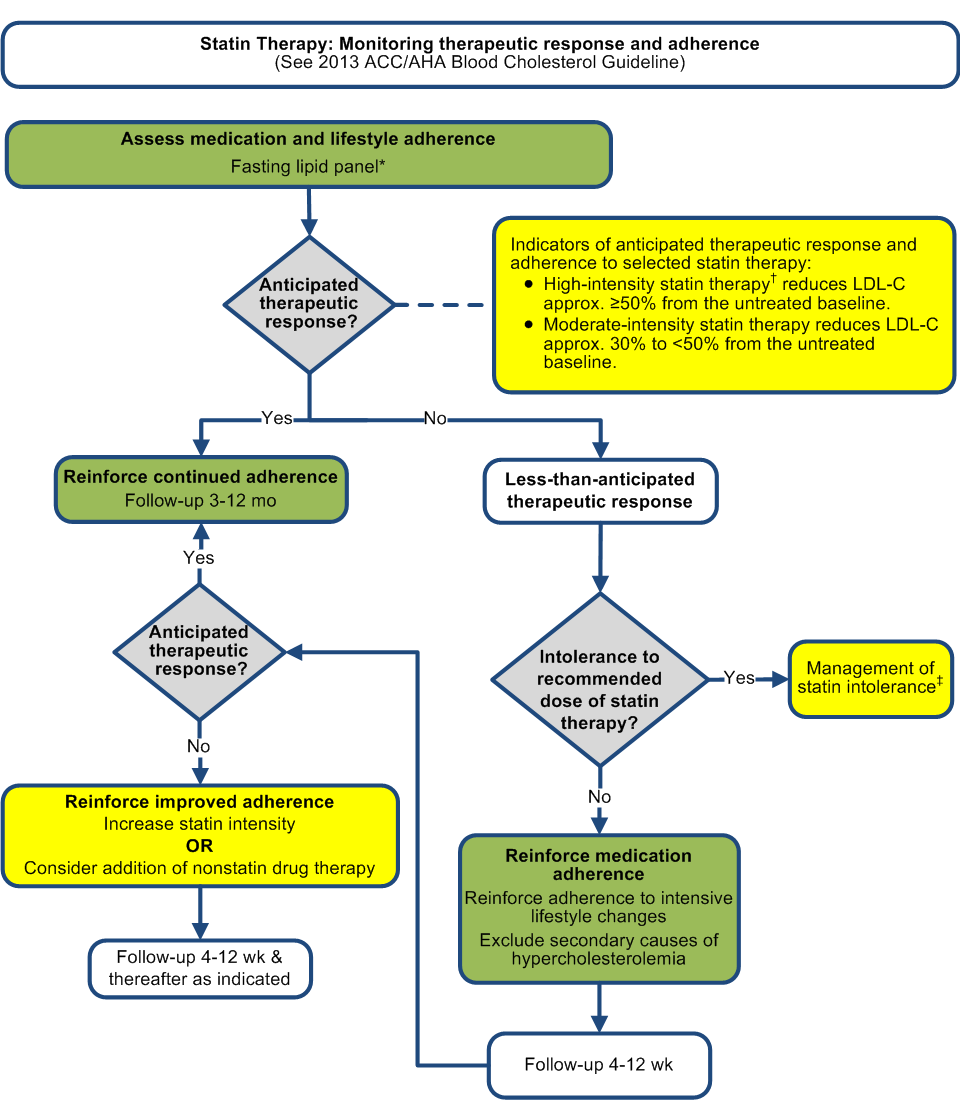Statin guidelines calculator
The 2013 ACCAHA guidelines recommend either a high-intensity or moderate-intensity statin regimen in patients who have an elevated ASCVD risk 75 for primary prevention of cardiovascular disease. Guidelines do not recommend statin therapy for patients with 10-year ASCVD risk.

Pin On Healthy Living
We suggest against the routine use of coronary artery calcium testing.

. Do not delay statin treatment if a person has acute coronary syndrome. For cardiovascular risk assessment in primary prevention we suggest using a 10-year risk calculator. ACCAHA Guidelines do not specify antihypertensive drug therapy for SBP.
Or in those with a 10-year risk of developing heart attack or stroke of 75. For primary prevention in patients not on statin therapy we suggest against routinely ordering a lipid panel more frequently than every 10 years. ACCAHA Guidelines do not specify antihypertensive drug therapy for SBP.
Occasionally statin use causes an increase in liver enzymes. This intermediate-risk group includes people ages 40 to 75 whose 10-year risk of heart disease or stroke ranges from 75 to 20 see heartrisk for a calculator. This peer-reviewed online calculator uses the Pooled Cohort Equations to estimate the 10-year primary risk of ASCVD.
This calculator only provides 10-year risk estimates for individuals 40-79 years of age. Statin alternatives include some prescription medications like ezetimibe and fibric acids. The 2018 guideline narrows the use of the atherosclerotic cardiovascular disease ASCVD risk calculator provides more guidance on the use of risk-enhancing factors in making statin therapy.
This lets us find the most appropriate writer for any type of assignment. This peer-reviewed online calculator uses the Pooled Cohort Equations to estimate the 10-year primary risk of ASCVD. Adults with a history of cardiovascular disease including stroke caused by atherosclerosis.
Guidelines recommend that people in any of these groups talk to their doctor about the risks and benefits of statin therapy. But people need to realize that these risk scores are imprecise. Adults 40-75 years with diabetes.
The cholesterol hypothesis holds that high blood cholesterol is a major risk factor for atherosclerosis cardiovascular disease ASCVD and lowering cholesterol levels will reduce risk for ASCVD. The documents address more detailed risk assessment newer nonstatin cholesterol-lowering drugs special attention to patient subgroups and consideration of the value of therapy all with the. Guidelines do not typically recommend aspirin therapy for patients with 10-year risk.
This calculator only provides 10-year risk estimates for individuals 40-79 years of age. Statin muscle pain may be the result of tissue damage or it could be due to the nocebo effect. The Work Group notes that this ACCAHA COR IIb recommendation is consistent with the recommendations in the 2010 ACCFAHA guideline 43 for patients with a 10-year CHD risk of.
1 The last update to the American College of CardiologyAmerican Heart Association cholesterol guidelines in 2013 takes a much narrower. Natural remedies that some people use to help treat high cholesterol include omega-3 fatty acids and red. All experts involved in the development of these guidelines have submitted declarations of interest.
Guidelines by the American College of Cardiology and the American Heart Association recommend statin treatment for primary prevention of cardiovascular disease in adults with LDL cholesterol 190 mgdL or those with diabetes age 4075 with LDL-C 70190 mgdl. Furthermore if you have an LDL-cholesterol bad cholesterol greater than 190 it is also generally recommended that you discuss with your doctor about. Guidelines do not typically recommend aspirin therapy for patients with 10-year risk.
If lifestyle modification is ineffective or inappropriate offer statin treatment. Atorvastatin 20mg daily SECONDARY PREVENTION Offer statin therapy to adults with CVD this includes angina previous MI revascularisationstroke or TIA or symptomatic peripheral arterial disease. This includes eating a heart-healthy diet regular aerobic exercises maintenance of desirable body weight and avoidance of tobacco products.
If the increase is mild you can continue to take the drug. The USPSTF recommends that adults without a history of cardiovascular disease CVD ie symptomatic coronary artery disease or ischemic stroke use a low- to moderate-dose statin for the. Used with a healthful low-cholesterol diet and exercise it can help achieve healthy cholesterol and triglyceride levels.
Our global writing staff includes experienced ENL ESL academic writers in a variety of disciplines. The risk assessment calculator used in the 2013 guidelines is still recommended in the 2018 cholesterol guidelines but they also recommend that clinicians talk to patients about factors that can increase their chances of heart disease and stroke including smoking weight high blood sugar and hypertension as well as family history. Guidelines do not recommend statin therapy for patients with 10-year ASCVD risk.
This hypothesis is based on epidemiological evidence that both within and between populations higher cholesterol levels raise the risk for ASCVD. This calculator assumes that you have not had a prior heart attack or stroke. High intensity statin may be atorvastatin 40mg-80mg.
Instead calcium scans are an option for people who fall in between. The long-anticipated release of the 2018 American College of CardiologyAmerican Heart Association cholesterol guidelines is now at hand and likely to be met with broad interest by clinicians in multiple specialties. Very rarely high-dose statin use can cause muscle cells to break down and release a protein called myoglobin into the bloodstream.
These have been compiled in a report and published in a sup. Those with LDL-C level of greater than 190 mgdL. The 2018 and 2019 guidelines from the American College of Cardiology and American Heart Association reflect the complexity of individualized cholesterol management.
If you have generally it is recommended that you discuss with your doctor about starting aspirin and a statin. This can lead to severe muscle pain and kidney damage. The 2013 ACCAHA guidelines recommend either a high-intensity or moderate-intensity statin regimen in patients who have an elevated ASCVD risk 75 for primary prevention of cardiovascular disease.
For some they may overestimate risk. Medical News Today has strict sourcing guidelines and. Crestor belongs to a class of drugs known as statins.
About Systematic Evidence Reviews and Clinical Practice Guidelines Published in the Journal of the American College of Cardiology Published in Circulation a journal of the American Heart Association. AHAACC guidelines stress the importance of lifestyle modifications to lower cardiovascular disease risk in all patients.

2016 Uspstf Cholesterol Guidelin

Ascvd Risk Estimator

Cholesterol Clarity Hardcover Cholesterol Lowering Foods Cholesterol Symptoms Cholesterol Remedies
2

Milk Thistle Dr Alex Rinehart Milk Thistle Benefits Milk Thistle Liver Care

Umhs Statin Dose Intensity And Equivalency Chart Statin Intense Dose

Pin On Exercise Plan

All About Cholesterol Hamilton What Causes High Cholesterol Healthy Cholesterol Levels Cholesterol

Pin On Detox Diet

Acc Indicates American College Of Cardiology Aha American Heart Association And Ascvd Atherosclerotic Cardiovascular Disease Fnp Cardiovascular Disease

Acc Aha Guideline For Cholesterol Management Flowchart Abi Ankle Download Scientific Diagram

Pin On Pt Notes

Astro Charm 10 Year Ascvd Risk Calculator With Coronary Artery Calcium Healthcare Technology Medical Technology Technology

How Do I Use The New Cholesterol Guidelines Clinician Reviews

Guidelines And Resources

The Cholesterol Conspiracy Cholesterol Lowering Foods Cholesterol Cholesterol Symptoms

Pin By Jencicc On Medical Heart Failure Nursing Study Rn School